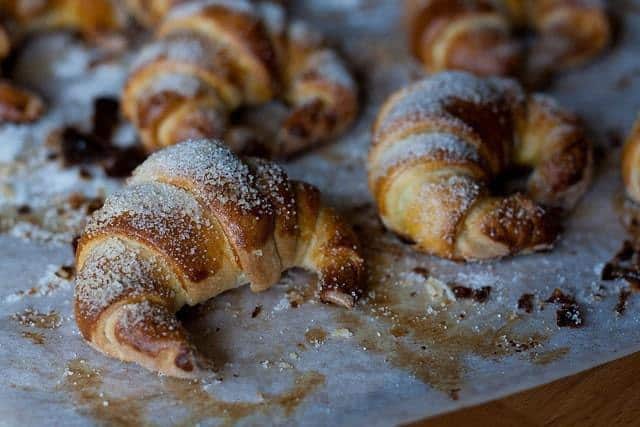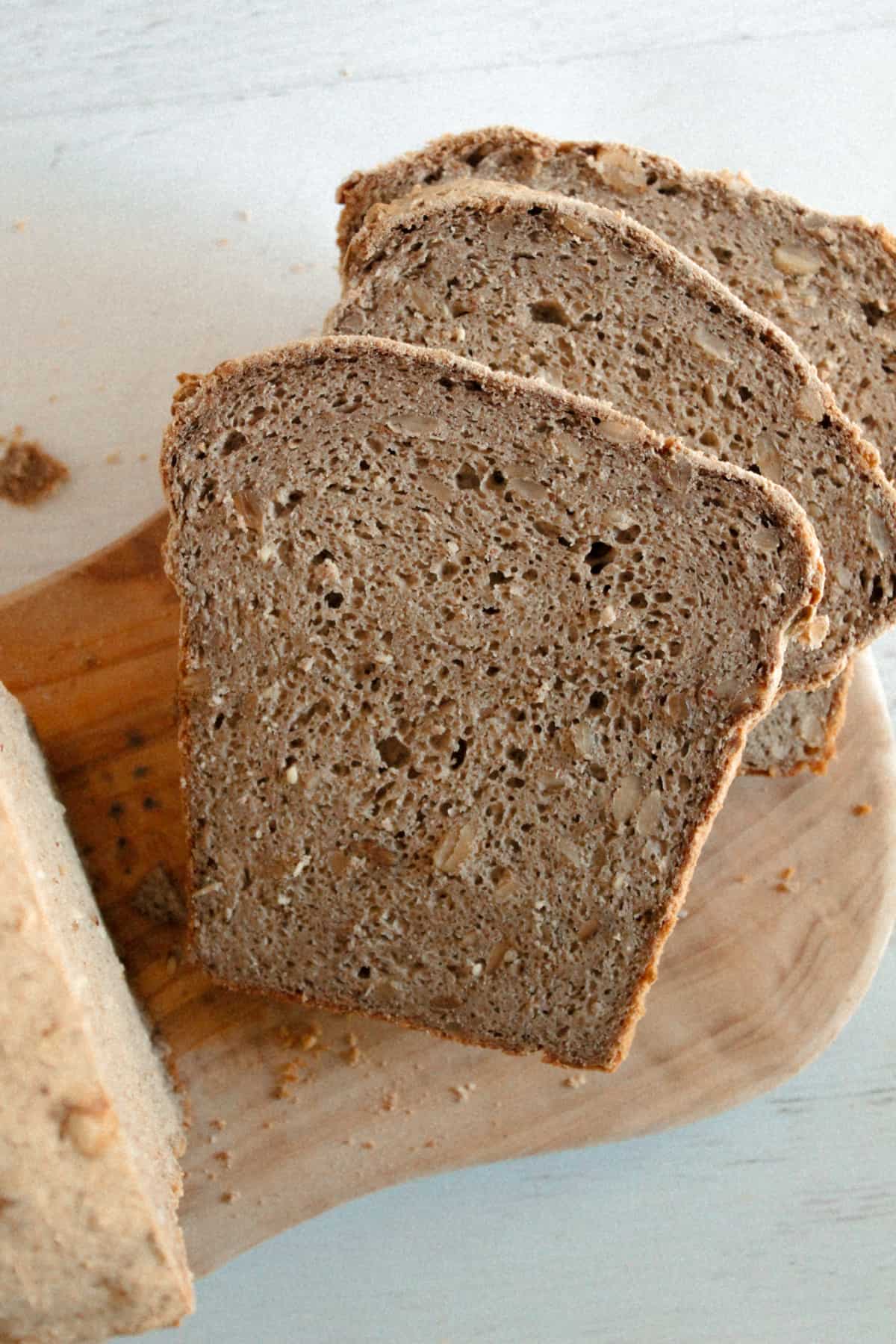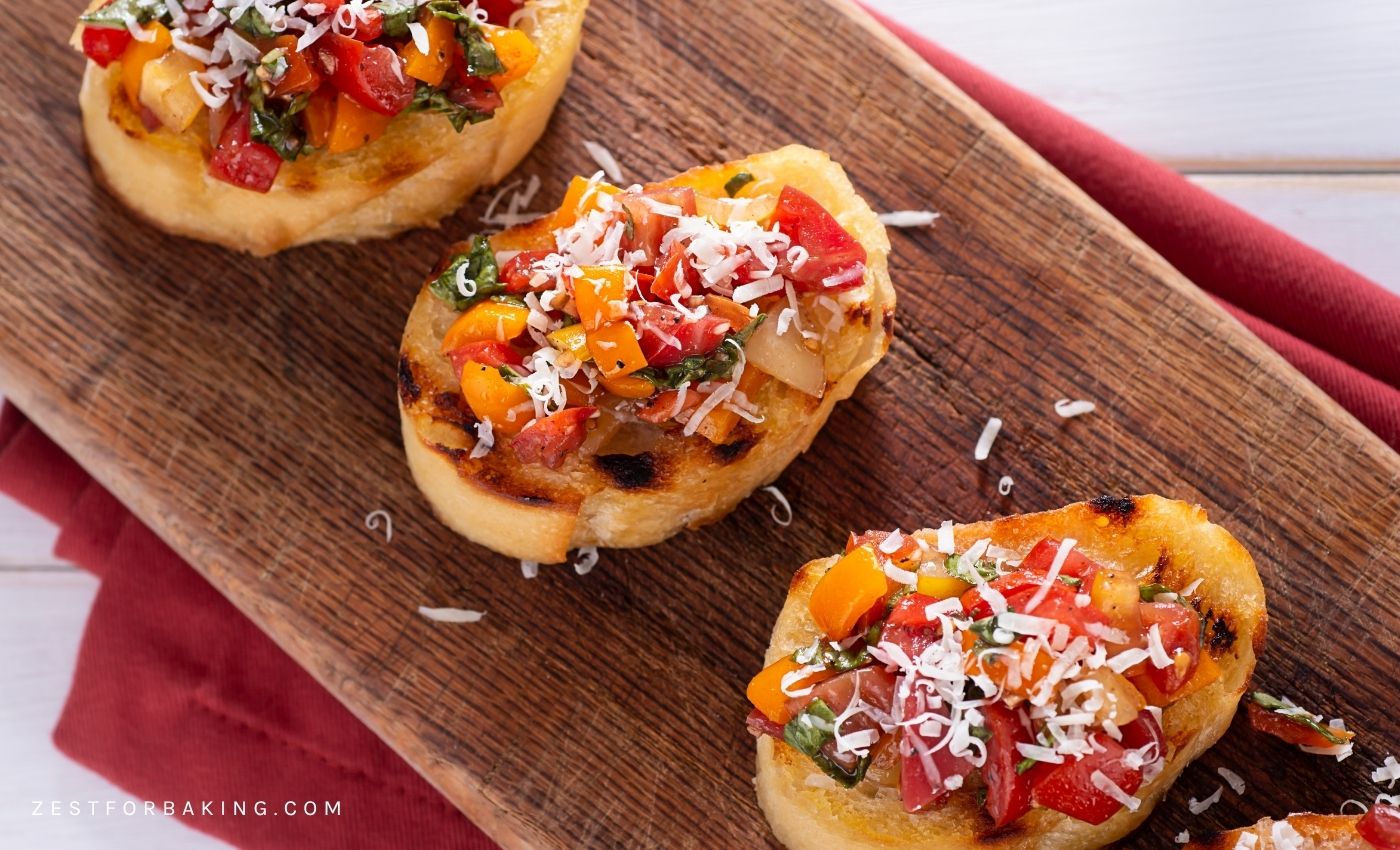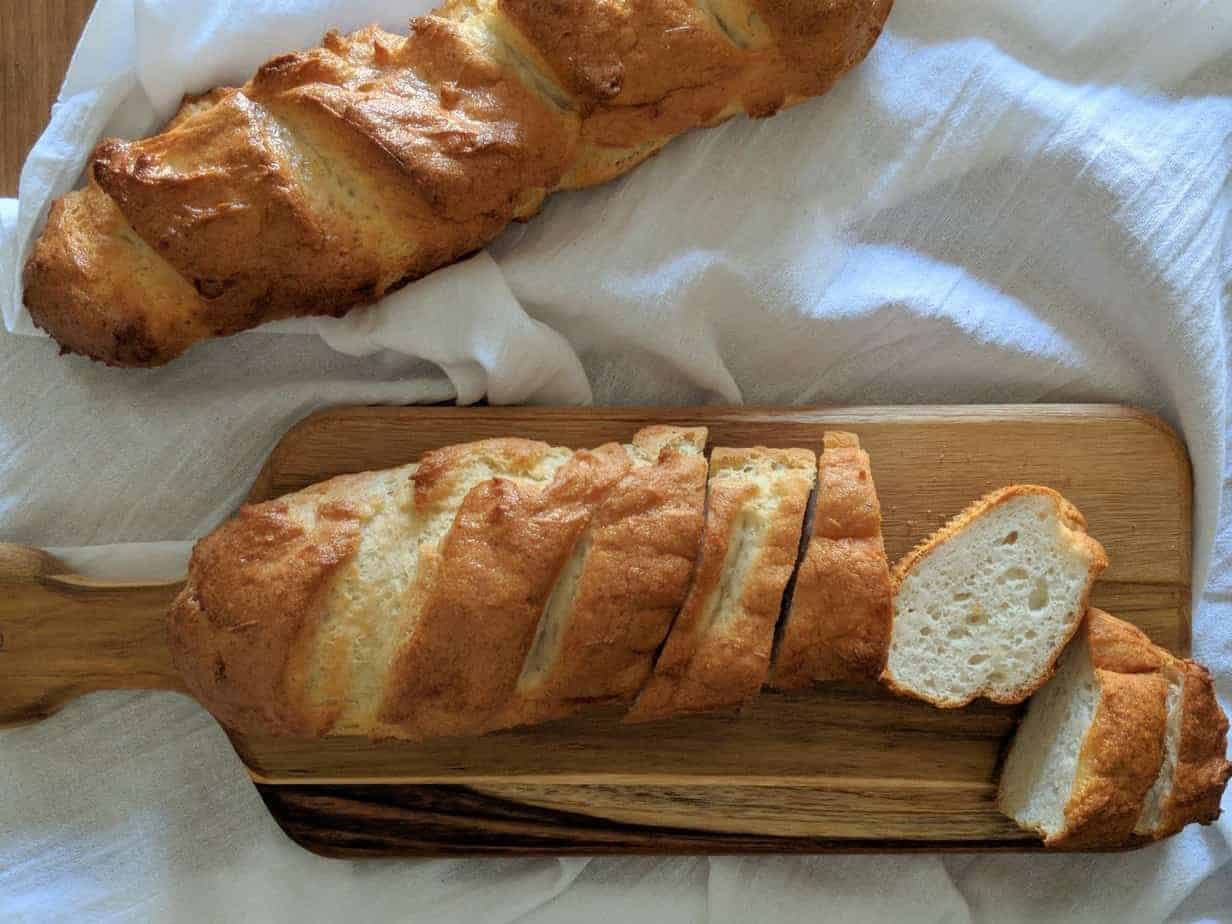How to Make the Most Tender, Flaky Gluten Free Croissants Ever

Imagine biting into layers of buttery goodness and just as you think this must be a dream and these must not actually be gluten free, they crumble delicately against your teeth. In fact it’s not a dream and these are flaky, luscious gluten free croissants. Just the name, croissant, sounds fancy and exotic. In fact, these light and flaky pastries we call croissants actually came from France. The recipes you’ll find for croissants vary widely in preparation time, ingredients and just about everything else.
But while there are many differences with croissants, one thing remains the same – the buttery taste we expect from them is how we gauge recipe success or failure.
Croissants are labor intensive, that’s no lie. There is folding and turning and refrigeration – the whole process takes about 2 days. But they are sooo worth it.
So get your supplies ready and let’s make some croissants.
First, the essentials:
- Whole milk. Not 2% or 1% and definitely not skim. Whole milk is important for producing the best, flakiest croissants. There is no substitute for the fat.
- Unsalted butter. This does not have to be fancy. Any good, unsalted butter will work just fine. It has to be cold though.
- Instant yeast. Also called fast rising yeast. This type of yeast works much better than regular yeast.
- Xanthan gum. This binding agent is essential for croissant success.
- Pectin. Used most often in making jelly, but great for our gluten free croissants.
- Expandex. This is modified tapioca starch.
- Superfine flours. The superfine flours work the absolute best when making croissants. Maybe it’s the fineness, maybe it’s the delicateness of them, either way they work together to create a tender, flaky, can’t resist, gluten free delight.
- Corn starch or rice starch.
Essential tools:
- A kitchen scale. The measurements are given in weight for a reason. Weight is an incredibly accurate measurement. Weigh all your ingredients for the best results.
- Rolling pin. During the process of making your croissants, you will be rolling out the dough several times. A rolling pin is the best tool for this step.
- Parchment paper. Parchment paper helps keep your beloved croissants in place while you roll, turn and flip them.
Now that you have the essential ingredients and the essential tools handy, let’s prepare some gluten free croissants.
Here are the portions for the croissant dough: (recipe adapted from
https://glutenfreecanteen.com/2012/05/06/croissants-gluten-free/)
220 grams gluten free flour (plus more for rolling etc.) (110 grams superfine brown rice flour, 55 grams superfine white rice flour, 55 grams tapioca flour)
35 grams Expandex tapioca starch (4 tablespoons)
1 ½ tsp. xanthan gum
¼ tsp. pectin
2 tsp. salt
100 grams or 7 Tbls. superfine sugar
2 tablespoons plus 1 teaspoon powdered milk
½ cup whole milk (not low fat or nonfat), room temperature
2 tablespoons yeast (use instant or bread machine)
2 tablespoons soft unsalted butter, cut into small chunks
½ cup sparkling mineral water, room temperature
1 large or x-large egg white, room temperature
Butter Package
13 tablespoons unsalted cold butter (1 stick plus 5 tablespoons more)
1 tablespoon brown or white rice flour
Finishing
1 whole large egg (for brushing croissant dough)
Instructions:
- In a large bowl, mix the flours with the Expandex, xanthan gum, pectin, salt, superfine sugar and 2 tablespoons powdered milk. Whisk to combine. Set aside. In a small glass bowl, whisk the yeast, one teaspoon of powdered milk with the room temperature whole milk. Whisk again to fully incorporate. Set aside.
- Add the 2 tablespoons of very soft butter pieces to the flour and work it in lightly with a fork or a pastry blender, leaving large pieces. Using a fork, add the sparkling mineral water and stir well. Add the egg white and stir to thoroughly distribute. Add the milk/yeast mixture and work that in with the fork until everything is well mixed. It will be very wet and very sticky – similar to cake batter.
- Take a teaspoon of flour and dust the top of the dough. Scrape the dough down from the sides of the bowl and turn the dough over mixing in the new flour. Add one more teaspoon of flour just to get the dough to turn with the spatula as you fold it. It will still be quite wet and sticky which is perfect.
- Cover the bowl with plastic wrap and place it in a warm, draft free place for at least two hours or until it somewhat doubles in size. The dough will still resemble cake batter at this point.
- Once it has risen or a couple of hours go by, place the whole bowl into the refrigerator. Leave it in there for about an hour or so.
- After it has been refrigerating for at least an hour, wrap plastic wrap around the ball of dough and place it in the freezer for about 30 to 45 minutes. The dough will have risen a bit and will be stringy looking.
Preparing the Butter
- Before you remove the dough from the freezer, take your butter and cut each stick in half length-wise. Place it on a piece of plastic wrap that has been dusted with a little flour and form it into a square shape. Add a little more flour on top and cover with more plastic wrap. Using a rolling-pin, flatten the butter until it’s about half its depth. Roll and pat the butter into a smooth 6 inch square. Place it in the refrigerator to firm it up. You should end up with a 6 inch square about ¼ of an inch thick.
The Croissant Dough
- Remove the dough from the freezer. Using a parchment lined space, place the dough and pat into a rectangular shape. Dust with more flour. Cover with plastic wrap and press with a rolling-pin from the center out to the edges. The dough should be able to be rolled.
- Roll the dough gently to smooth it into a long rectangle about 3x longer than it is wide. You should have a thick, padded dough square in the center that is a little bigger than the butter package. Brush the excess flour from the dough.
- Place the butter on the padded portion and fold the rolled edges over each other and the butter. Pinch the edges closed with your fingers. Press the top with your palm and then the rolling-pin – very gently to seal the butter. You will not see the butter package but you should be able to feel it. Make sure the dough is thickly padding it on the top and bottom and pinch the sides closed. The dough will be smooth and square.
- Get ready to fold: Dust a touch of flour on the dough, cover it with plastic wrap and press with the rolling-pin to flatten but making sure you don’t pop the butter through the dough. Once it is pressed and flattened, roll the dough so that it is 3 times longer than wide (wide side should be facing you). Brush off the excess flour. Fold the dough from the length ends like a business letter – in thirds. Brush off excess flour as you go.
- Turn the folded dough package 90 degrees, clock wise and repeat that process.
- Wrap the dough in plastic wrap and refrigerate it for at least an hour to an hour and a half. The dough should be forming up, but still look a bit rough.
- Repeat the process: press, roll, fold: turn, press, roll, fold: refrigerate.
- Repeat the process once more: press, roll, fold: turn, press, roll, book-fold, and then refrigerate overnight. The book fold: Take each end (length) and bring those to meet in the center like you are bringing pages of a book to the center. Brush off any excess flour again. Now bring one side over the other just like closing a book. Wrap in plastic and refrigerate overnight. At this point the dough should be very smooth. You might be able to see the butter underneath the dough. If butter pokes out of the edges of the dough it’s ok. The dough should fold easily with no cracking at all.
- Prepare two baking sheets by lining them with parchment.
- Rolling the croissants: Press the dough and roll exactly as before. This time you are rolling the dough into a rectangle about 25 inches long by 9 inches wide (the 9 inch wide side is facing you). It should be about ⅛ inch thick – take care to roll the evenly so it is the same thickness throughout.
- Trim the rough edges using a pizza cutter so that you have a nice, clean edged rectangle.
- Using the pizza cutter, mark off every 5 inches and slice vertically through the width. You should end up with 5 pieces about 5 inches wide by 9 inches tall. Use the pizza cutter to cut each of those pieces in two from one opposite corner to the other opposite corner creating triangles. You should get two triangles out of each piece.
- Take each triangle and brush off the excess flour. Pick it up from the bottom of the triangle and try to gently work it into a straighter bottom. If it feels like it will break, don’t try it. Make a small vertical slice (about ¾ of an inch) in the bottom of the triangle and begin rolling up by fanning out those flaps keeping the dough rolling evenly. The tip should be on the bottom when you are done, like a little tail.
- Place on the parchment lined baking sheet and repeat. Leave a couple of inches between each croissant.
- Cover with plastic wrap and let them rise for about an hour. Be careful not to let them over-rise because the butter will leak.
- Preheat oven to 400 degrees. Remove plastic wrap and brush the croissants with the egg wash 3 times. Begin at one end of the pan and repeat twice more. Bake at 400 for 2 to 3 minutes. Then turn oven to 350 and bake about 18-20 minutes more or just until they are dark golden brown, have risen and their internal temperature is 200 degrees. Let them cool completely on a wire rack.
Enjoy!


